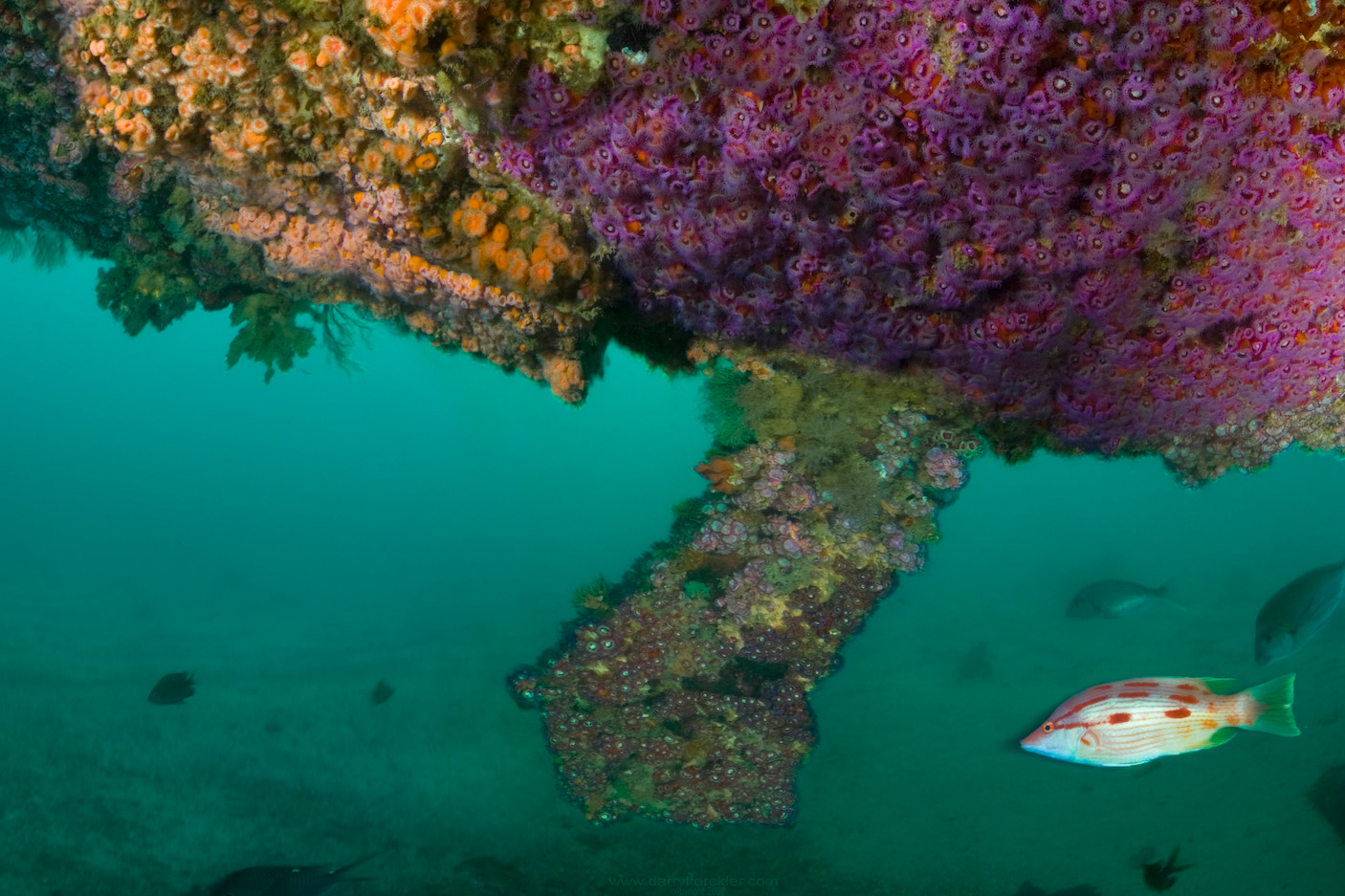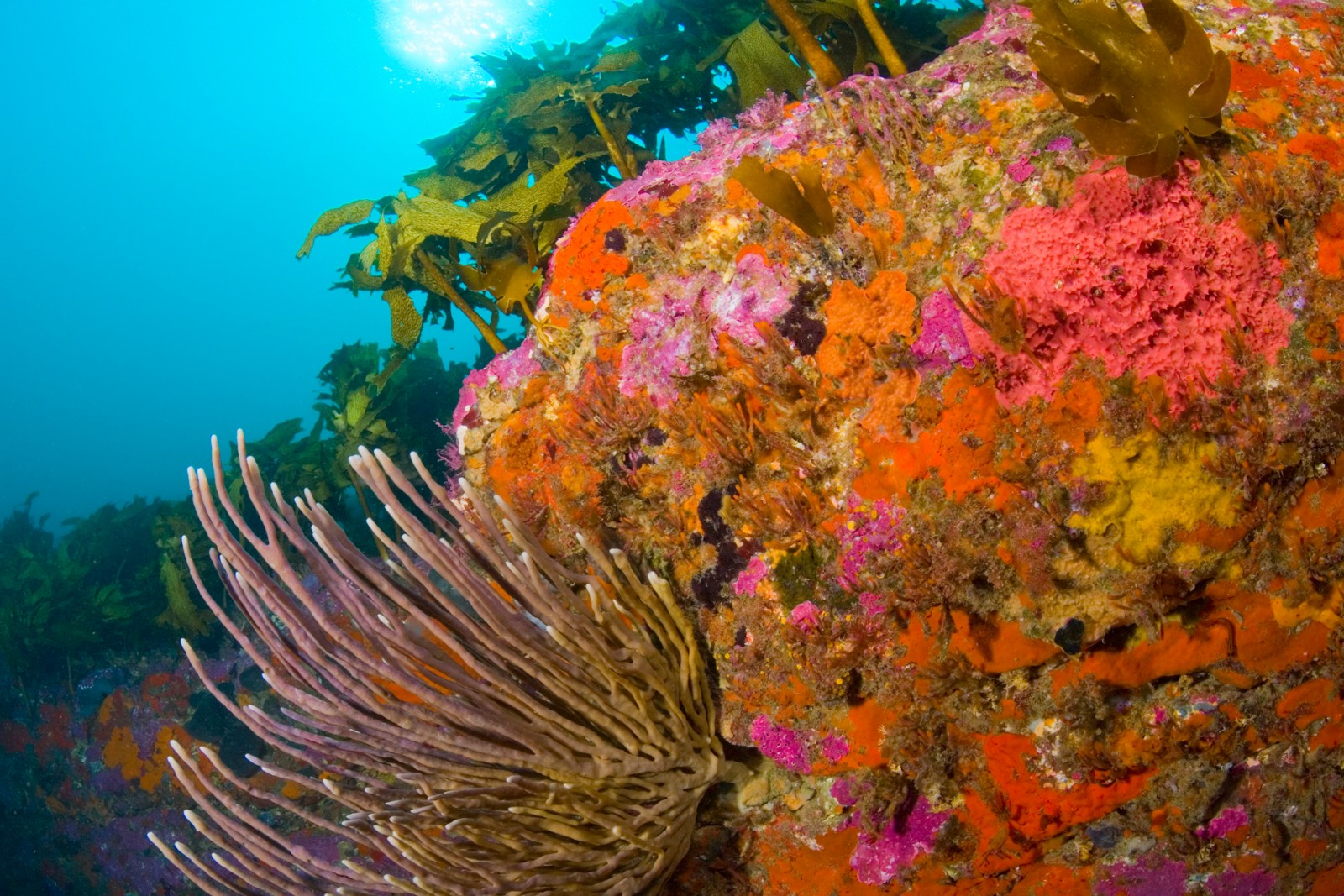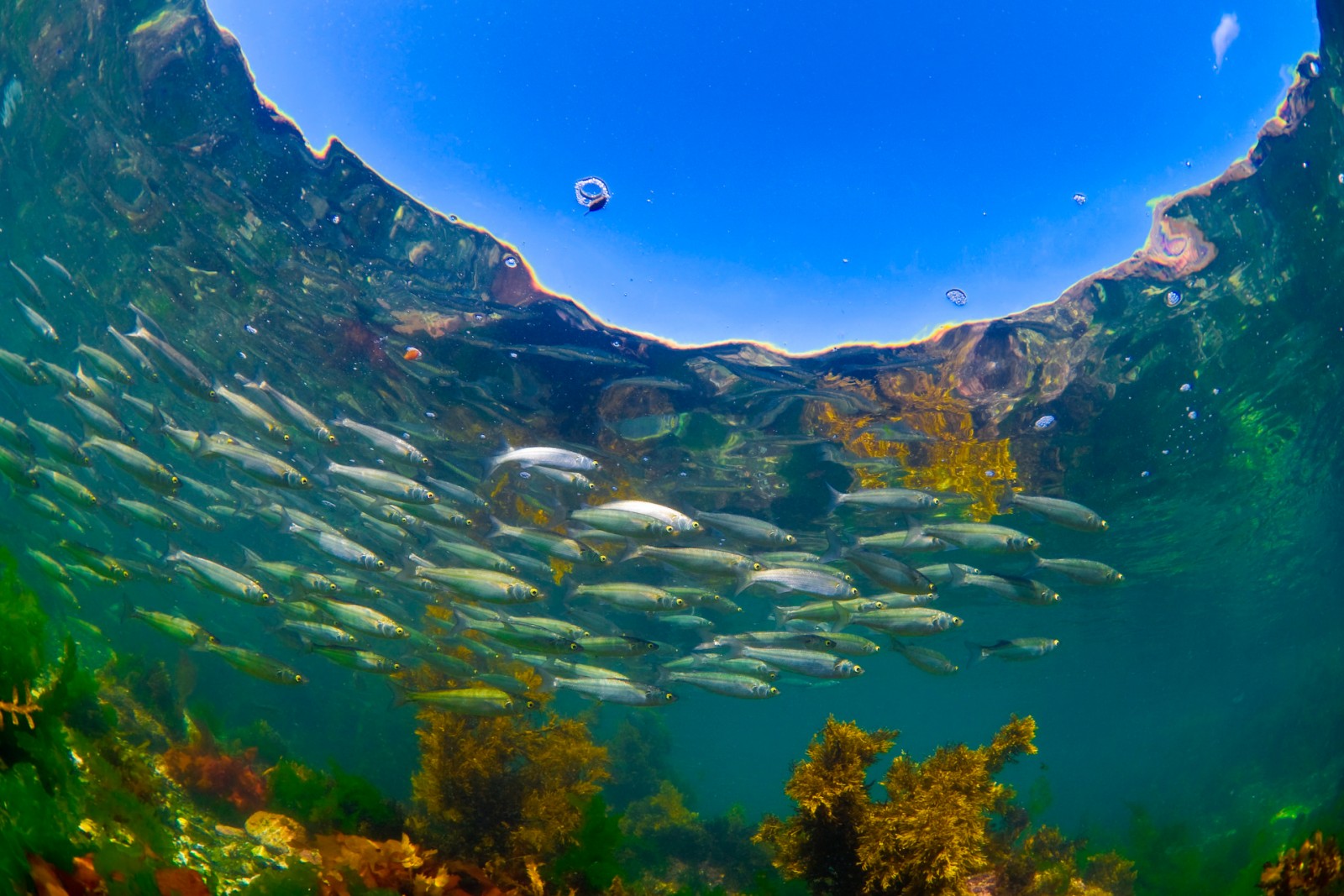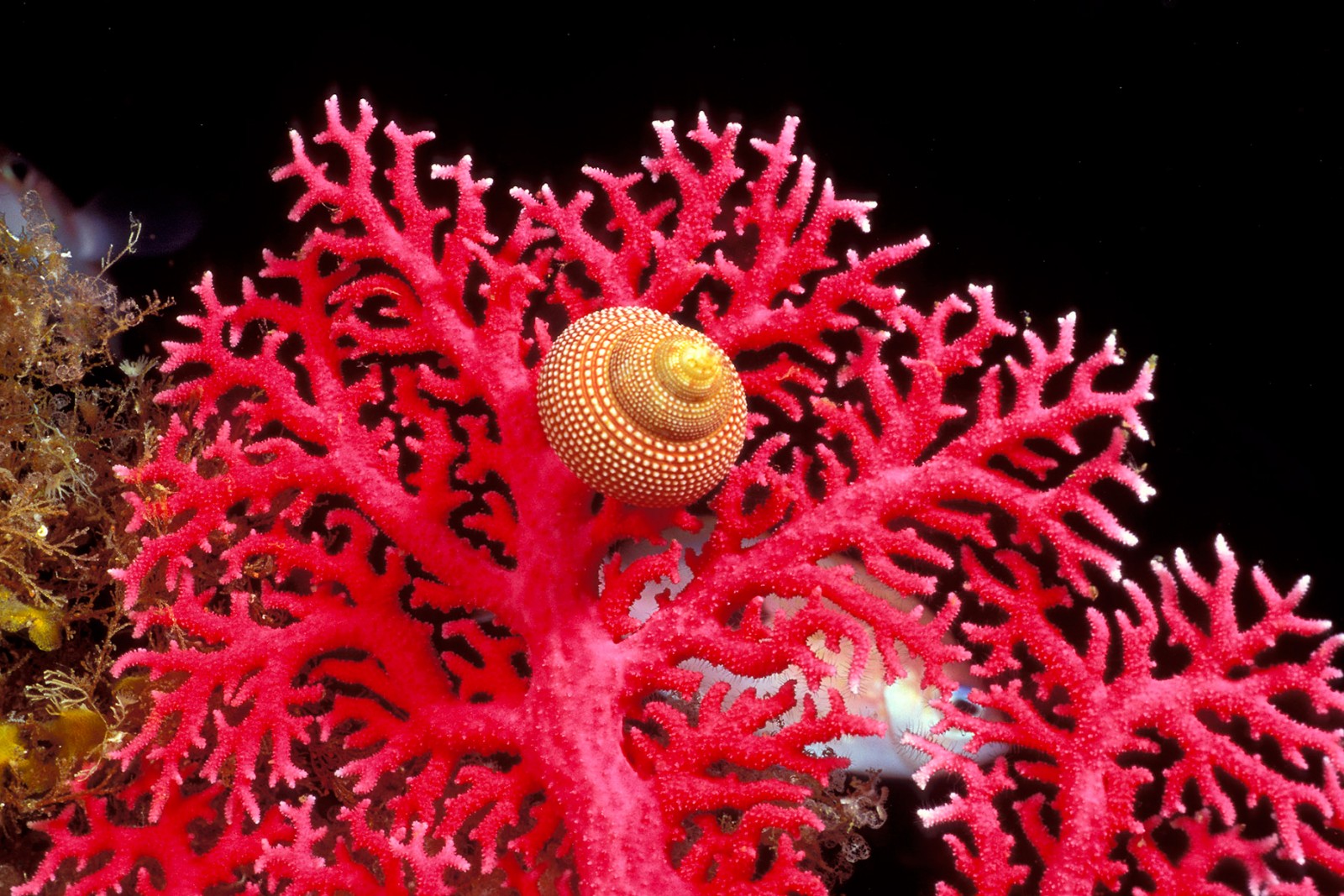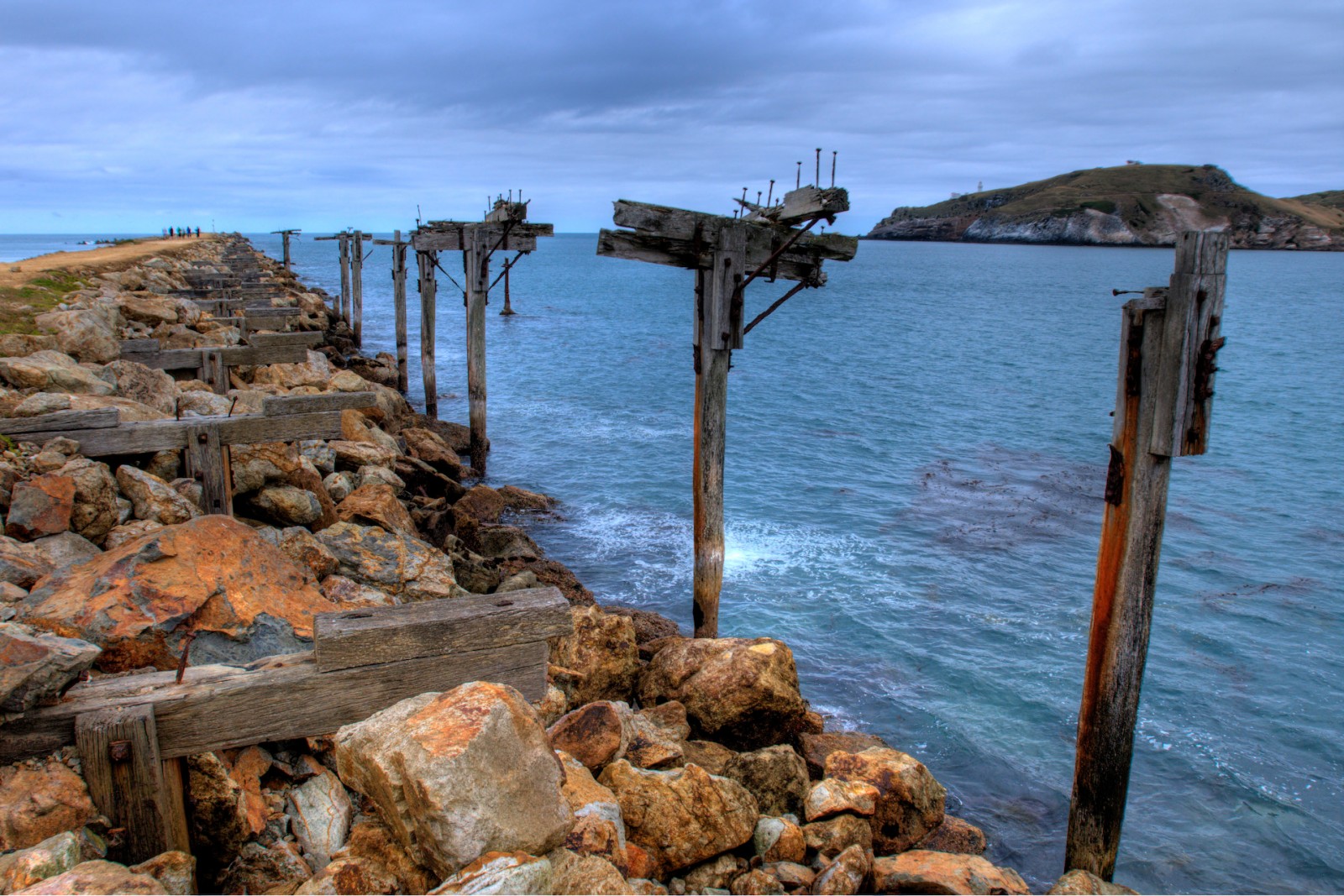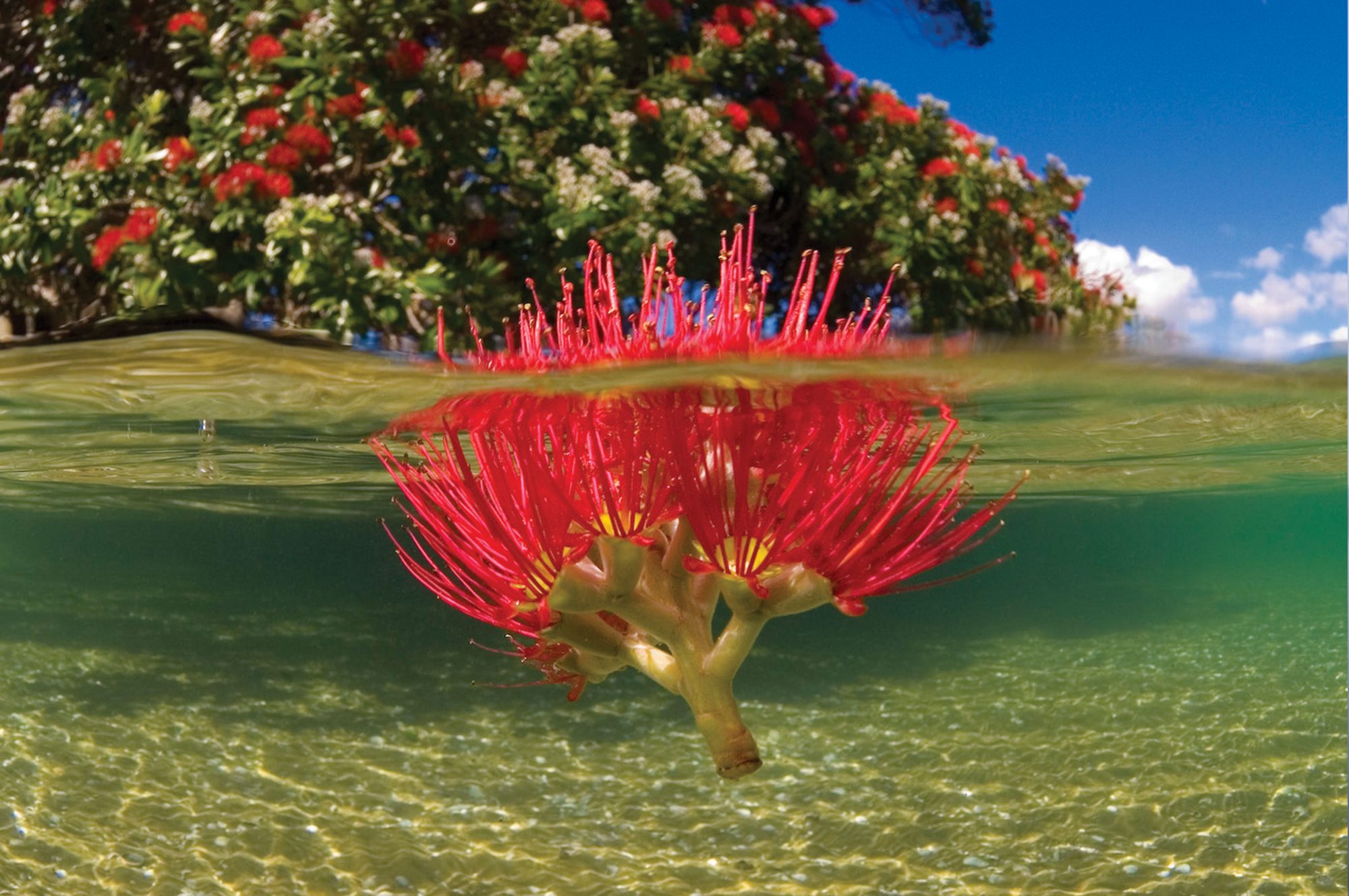
Underwater Transect
New Zealand extends through a wide range of latitudes—from semi-tropical waters off the Kermadec Islands in the north, to frigid, tempestuous seas that lash subantarctic islands in the south. Here, unique marine organisms inhabit an equally strange underwater terrain, a product of the volcanism that accompanies seafloor subduction to form ridges, reefs, pinnacles and a network of large underwater canyons and trenches.

